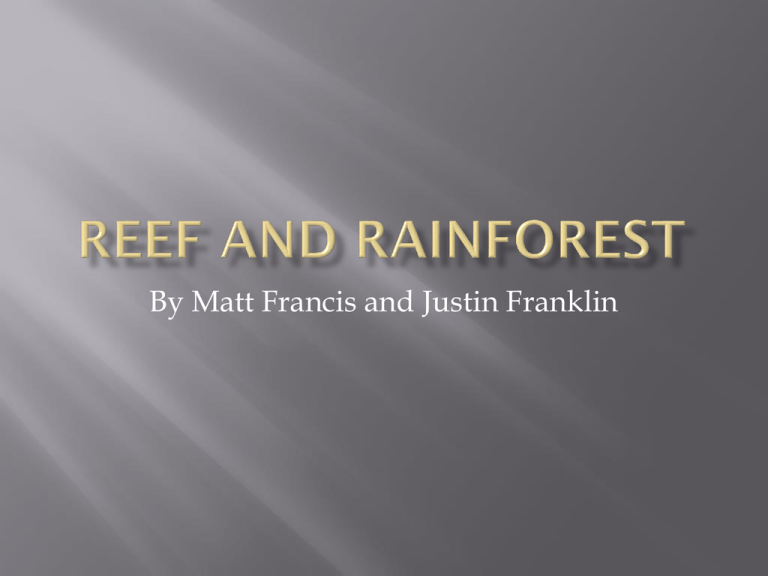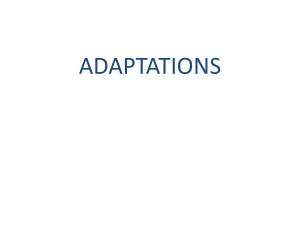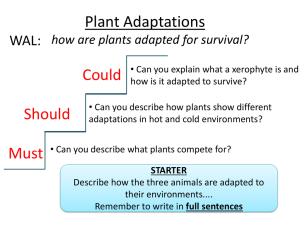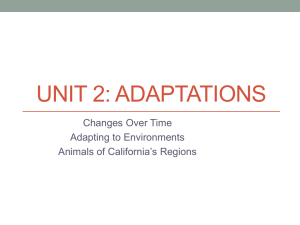5361-20130923194041
advertisement

By Matt Francis and Justin Franklin Biotic-plants(algae, seaweed), animals(fish crabs, coral, plankton) Abiotic- sand and water Climate-Warm ocean water Biotic-plants (ferns, trees, flowers, vines), Animals(birds, snakes, insects, monkeys) Abiotic-Soil and Rocks. Climate-warm and humid The limiting factors are pollution, disease, overfishing, dynamite and cyanide fishing, and sedimentation. The limiting factors of a rainforest are deforestation, darkness on the forest floor, human activity, natural disasters, and tropical storms. Variations, tolerances, and adaptations There are 30 variations of clownfish such as cinnamon and striped maroon clownfish. Tolerances- a clownfish needs warm salty water, algae, zoo plankton and isopods to survive. Adaptations- a clownfish has a coating of slime around its body to keep it safe from anemone stings. The male can switch to female if the female dies. Variations, tolerances, and adaptations There are 850 variations of crab such as the Japanese Spider Crab and the Pea Crab. Tolerances – a crab needs saltwater, plankton, sea worms and the ability to scavenge. Adaptations – crabs have a hard exoskeleton to protect themselves from predators. Antenna that can sense vibrations, and pinchers for defense and getting food. Variations, tolerances and adaptations There are many types of coral such as blue coral, brain coral, tube coral, and table coral. Tolerances – coral needs warm salty water, firm sand, and phytoplankton to survive. Adaptations – certain toxins in soft coral make it unappetizing for predators. Some types of coral produce toxins that eliminate predators and increase their living space. Variations, tolerances, and Adaptations There are 7 variations of Spider Monkeys such as the Black-Faced Spider Monkey and the Red-Faced Spider Monkey. Tolerances- a Spider Monkey needs a warm climate, fruit, and trees to survive. Adaptations – Spider Monkeys have powerful tails to grip the trees. They also have extremely long limbs to swing from branch to branch. Variations, tolerances, and adaptations There are 28 variations of Boa constrictors such as the Imperator and the Emerald Tree Boa. Tolerances – a warm climate and a variety of small animals to eat. Adaptations – eat sensitive scales to locate prey and sensors on their tongue to detect odors. Variations, tolerances, and adaptations There are 6 variations of sloths such as the Brown-Throated 3-Toed Sloth and the Pigmy 3Toed Sloth. Tolerances – warm climate, trees, foliage. Adaptations – long curved claws to latch on to tree branches, and a complex stomach to digest foliage. Clownfish have a symbiotic relationship with sea anemones. They benefit form each other’s company for food and protection. (mutualism) Decatur Crabs snip pieces of sponges and imbed them in their shells. (commensalism) Cleaner Shrimp clean out fish mouth. The fish gets a clean mouth and the shrimp gets and easy meal. ( mutualism) Agouti opens the Brazil nut tree’s nuts and eats some of them, but scatters the rest of the seeds. (mutualism) A Boa Constrictor hunting a bat is predation. Two monkeys fighting over a mate is competition.











